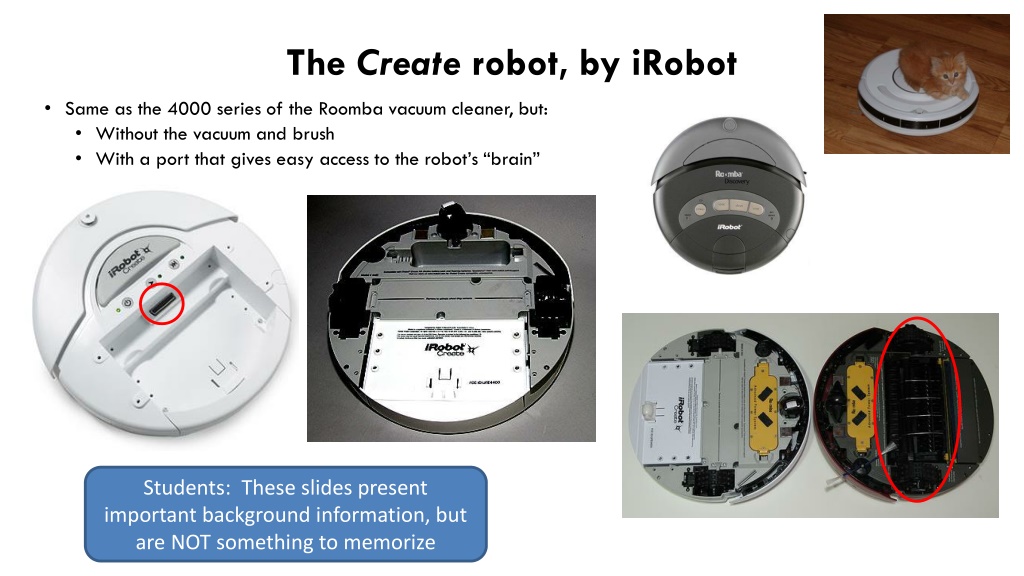
Understanding Robot Hardware and iRobot Create Features
Explore the hardware components of robots, including effectors, actuators, sensors, and controllers, along with an in-depth look at the features of the iRobot Create platform for educational purposes.
Download Presentation

Please find below an Image/Link to download the presentation.
The content on the website is provided AS IS for your information and personal use only. It may not be sold, licensed, or shared on other websites without obtaining consent from the author. Download presentation by click this link. If you encounter any issues during the download, it is possible that the publisher has removed the file from their server.
E N D
Presentation Transcript
The Create robot, by iRobot Same as the 4000 series of the Roomba vacuum cleaner, but: Without the vacuum and brush With a port that gives easy access to the robot s brain Students: These slides present important background information, but are NOT something to memorize
Robot hardware Robots generally have: Effectors allow the robot to take an action, e.g.: Move Grasp Touch Talk Actuators mechanisms that drive the effectors, e.g.: Motors / servos Hydraulics Pneumatics Sensors tell the robot about the world around it Controller the robot s brain
Robot hardware Effectors allow the robot to take an action, e.g.: Move Grasp Touch Talk
Robot hardware Robots generally have: Effectors allow the robot to take an action Actuators mechanisms that drive the effectors, e.g.: Motors / servos Hydraulics Pneumatics
Robot hardware Robots generally have: Effectors allow the robot to take an action Actuators mechanisms that drive the effectors Sensors allow the robot to know (sense) things about the world Controller
iRobot Create hardware Effectors 3 wheels, 1 speaker, 3 lights, output ports that send signals Actuators: 2 independent motors Battery power Sensors: 2 touch (bump) 3 buttons 3 wheel-drop sensors 4 active IR cliff sensors 1 passive IR receiver 2 wheel encoders And more!
Your Python program uses the create library. It supplies methods that send commands: to your laptop s Bluetooth radio, then to the BAM on the Create, then to the Create s controller. Ditto for the reverse path.
As usual, use the dot trick to learn the methods in the Create class. This slide highlights a few particularly useful methods.
